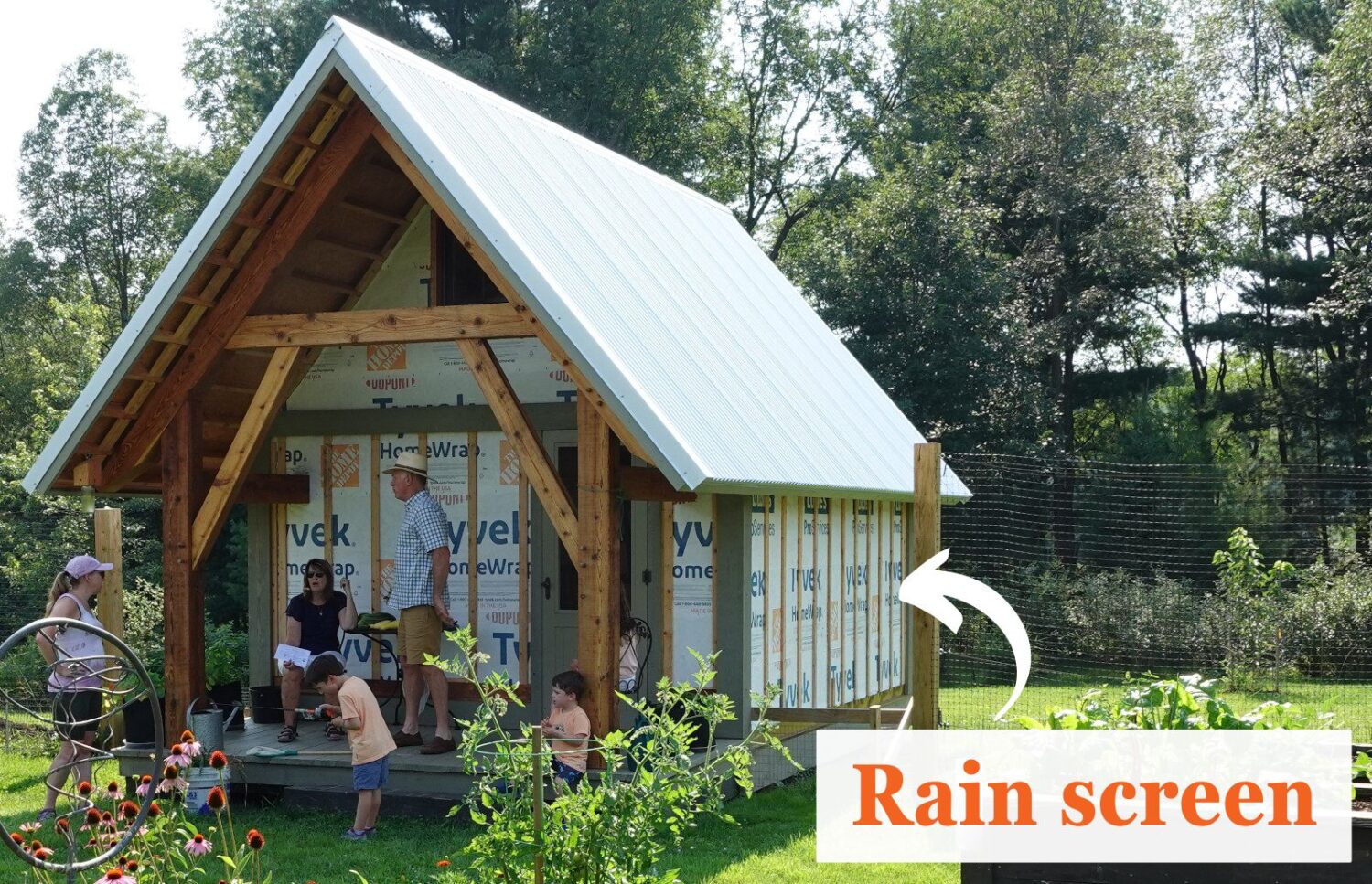
As part of our mission to be stewards of the environment, Timberbuilt strives to educate our clients on a wide number of earth-friendly options throughout the decision making process. Our goal is to put you in position to make informed choices, especially in regard to large investment, long-lasting, protective building elements like your siding.
Many of our homes feature a mix of earthy siding materials like stone, stucco, and wood. You’ll also notice fiber cement and metal. The most important part of your siding system, regardless of material, is a properly installed rain screen.
A rain screen creates an airspace between the face of the panel and the back of the siding. This protects the SIPs, allows everything to dry (if water finds its way behind the siding), and greatly increases the life of the system.
With that in mind, we feel obligated to share these simple material recommendations.
We strongly suggest using wood siding whenever possible.
Wood siding’s reputation as a maintenance needy material that deteriorates quickly is incorrect. Despite what some siding manufacturers would like you to believe, properly installed wood siding with a rain screen can last in excess of 100 years.
To protect against water penetration, we recommend sealing the entire surface (all edges and sides) prior to installing each piece of siding.
Maintenance is simple and doesn’t require any heavy prep work or scraping. Just re-apply your stain when necessary. Modern stain materials can last 10-20 years and a natural oil finish usually lasts around 5 years.
Fiber cement siding tends to create problems.
Please be sure to ask your contractor to see some examples of their work with this specific material. Unfortunately, we’ve seen some very poor installations of this product.
Fiber cement is typically painted. While it is less absorbant than wood it still moves with humidity and frost. When installed improperly it will swell and the paint will begin to flake. This can happen very fast.
This material also poses some environmental concerns. It requires more energy and resources to produce than wood siding and the silica dust created when cutting fiber cement is very hazardous to inhale.
Your Timberbuilt home will be super insulated and energy efficient regardless of your choice in siding.
We offer these recommendations only as further steps to increase its overall sustainability.
This is your home, these are your decisions, and many different products can work well when installed correctly. We’re always happy to offer our support and our enthusiasm regardless of what materials you choose.
WANT TO STAY IN THE LOOP?
OUR
NEWSLETTER
Includes info & pics, sent just 4x a year.
